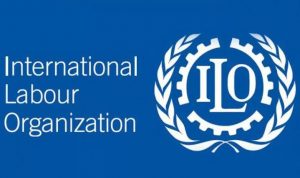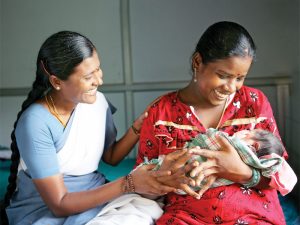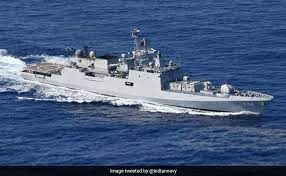Today Current Affairs: 3rd September 2021 for UPSC IAS exams, State PSC exams, SSC CGL, State SSC, RRB, Railways, Banking Exam & IBPS, etc
Table of Contents
China’s New Maritime Rules

From September 1, 2021, China’s new maritime rules designed to control the entry of foreign vessels in what Beijing calls “Chinese territorial waters” take effect.
- Foreign vessels, both military and commercial, will be henceforth required to submit to Chinese supervision in “Chinese territorial waters,” as per the new law.
- The move is expected to have far-reaching consequences for passage of vessels, both commercial and military, in the disputed South China Sea, East China Sea and Taiwan Strait, and is likely to escalate the existing tension with the US and its neighbours in the region.
- The South China Sea, which lies between China, Taiwan, the Philippines, Brunei, Malaysia, Indonesia and Vietnam, is of great economic importance globally.
- The waters around China are hotly contested. Under a “nine-dash line” map, China claims most of the South China Sea as its sovereign territory. This claim is contested by its neighbours in the region and by the United States, which, though it has no claim in the Sea, backs the smaller nations in the fight against Chinese overreach.
- Currently, international maritime activities are governed by an international agreement called the United Nations Convention on the Law of the Sea (UNCLOS) of which China, India and over a hundred other countries are signatories (the US, significantly, is not).
- Accordingly, states have the right to implement territorial rights up to 12 nautical miles into the sea. The UNCLOS also states that all vessels have the right of “innocent passage” through this region – China’s new law violates this.
Multinational Exercise ZAPAD 2021

A contingent of 200 Army personnel will participate in the multinational Exercise ZAPAD 2021 being held at Nizhniy, Russia from September 3 to 16, the Army said.
- Of the 17 countries invited for the exercise, there are nine Participating countries and eight Observers including China and Pakistan.
- ZAPAD 2021 is one of the theatre level exercises of Russian armed forces and will focus primarily on operations against terrorists.
- The NAGA Battalion group participating in the exercise will feature an all arms combined task force.
- The exercise aims to enhance military and strategic ties amongst the participating nations while they plan and execute this exercise.
Provident Fund (PF) Accounts

The government has decided to split existing Provident Fund (PF) accounts into two separate accounts in order to operationalise the new tax on PF income arising out of employee contributions exceeding ₹2.5 lakh a year.
- The Finance Ministry notified new Income Tax rules to this effect, but experts said this could prove to be an administrative nightmare for the Employees’ Provident Fund Organisation (EPFO) and a few thousand employers who manage their workers’ EPF savings in-house.
- For the purpose of calculation of taxable interest, separate accounts within the provident fund account shall be maintained during the previous year 2021-2022 and all subsequent previous years for taxable contribution and non-taxable contribution made by a person,” as per the Income-Tax (25th Amendment) Rules, 2021.
- Accordingly, all EPF accounts will have to be bifurcated into a taxable and non-taxable contribution account, with the latter including their closing account balance as on March 31, 2021, any contributions made thereafter that are “not included in the taxable contribution account” and annual interest accrued on these two components.
- The EPFO had 24.77 crore members with EPF accounts, of which 14.36 crore members had been allotted Unique Account Numbers (UAN) as of March 31, 2020.
- About 5 crore of these members were active contributors into their EPF accounts during 2019-20.
SAARC:

With uncertainty hanging over the international representation of Afghanistan under the Taliban, a question has risen over its membership in the South Asian Association for Regional Cooperation (SAARC), which is scheduled to meet next in Islamabad.
- The fate of Afghanistan’s membership, and even the future of SAARC to some extent, depends on the Taliban creating an inclusive government.
- SAARC comprises of eight Member States: (1) Afghanistan, (2) Bangladesh, (3) Bhutan, (4) India, (5) Maldives, (6) Nepal, (7) Pakistan and (8) Sri Lanka.
- Afghanistan was admitted into the SAARC as the eighth member in 2007 when the country was led by President Hamid Karzai.
Ramon Magsaysay Award:

This year’s Ramon Magsaysay Award — regarded as the Asian version of the Nobel Prize — were announced.
The winners are:
- Indonesian torch bearer for investigative journalism, Watchdoc.
- Muhammad Amjad Saqib, a microfinance pioneer from Pakistan,
- Filipino fisher and community environmentalist Roberto Ballon,
- American Steven Muncy for humanitarian work and refugee assistance and
- Firdausi Qadri, a Bangladeshi vaccine scientist,
Ramon Magsaysay award is named after Ramon Magsaysay, the third president (1953-57) of Philippines.
- It is given to individuals and organizations in Asia regardless of race, creed, sex, or nationality, who have achieved distinction in their respective fields. (There are some instances where the winners came from Non-Asian countries, but accomplished something in Asia).
Economic Recovery:

The National Statistical Office data has revealed that the Indian economy grew at a record pace of 20.1% in April-June 2021, as compared to the corresponding period last year.
- Last year, Gross domestic product (GDP) contracted 24.4% in the same period, when the national lockdown due to the Covid-19 pandemic had nearly halted all economic activities.
About Economic Recovery:
- The first quarter’s high growth rate, has come despite a brutal second wave of the pandemic which peaked in April-May 2021.
- The sharp increases were largely due to the low base (-24.4%) of the first quarter of 2020-21.
- This growth reaffirms the government’s prediction of an imminent V-shaped recovery made last year.
- However, despite phenomenal economic recovery, the GDP in the first quarter is still 9.2% lower than the GDP in the same period during the pre-Covid year 2019-20.
- Amongst sectors, manufacturing and construction imparted a significant push to the economy in April-June, growing 49.63% and 68.3% respectively, over April-June 2020.
- However, the services sector continued to lag.
- Sectors including ‘agriculture, forestry and fishing’ and ‘electricity, gas, water supply and other utility services’ are above the levels of the pre-Covid year of 2019-20.
V-shaped Economic Recovery:
- A V-shaped recovery is characterized by a quick and sustained recovery in measures of economic performance after a sharp economic decline.
- Such recoveries are generally spurred by a significant shift in economic activity caused by rapid readjustment of consumer demand and business investment spending.
World Social Protection Report: ILO

International Labour Organization report titled ‘World Social Protection Report 2020–22’ has revealed that, globally 4.1 billion people are living without any social safety net of any kind.
- The report highlighted that the pandemic response was uneven and insufficient. Thereby, Covid-19 has further underscored the critical importance of achieving universal social protection.
- ILO is a specialized agency of the United Nations.
- It is the only tripartite UN agency.
- It brings together governments, employers and workers of 187 member States, to set labour standards, develop policies and devise programmes promoting decent work for all women and men.\
Highlights of the Report:
- Global Population with Social Protection: In 2020, only 46.9% of the global population benefitted from at least one protection under the ambit of social security.
- Challenges Put Forward by Covid-19 Pandemic: Pervasive challenges such as high levels of economic insecurity, persistent poverty, rising inequality, extensive informality and a fragile social contract have been exacerbated by Covid-19.
- Persisting Inequalities: There are significant regional inequalities in social protection, with Europe and Central Asia having the highest rates of coverage – 84% of people are covered by at least one benefit.
- The Americas are also above the global average, with 64.3%, while Asia and the Pacific (44%), the Arab States (40%), and Africa (17.4%) have marked coverage gaps.
- Disparity in Social Security Expenditure: Countries spend on average 12.9% of their GDP on social protection (excluding health), but this figure masks staggering variations.
- High-income countries spend on average 16.4%, upper-middle-income countries 8%, lower-middle income countries 2.5%, and low-income countries 1.1%.
- Limited Protection to Women, Children And Disabled Peoples: Globally, the vast majority of children still have no effective social protection coverage – only one in four children (26.4%) receives a social protection benefit.
- Just 45% of women with newborns receive a cash maternity benefit.
- Only one in three people with severe disabilities (33.5%) worldwide receive a disability benefit.
- Limited Unemployment Protection: A mere 18.6% of unemployed workers worldwide have effective coverage for unemployment and thus actually receive unemployment benefits.
- This remains the least developed branch of social protection.
Barriers to Accessing Healthcare: Significant progress has been made in increasing population coverage. - However, barriers to accessing healthcare remain in the form of:
- Out-of-pocket payments on health services, Physical distance, Quality and acceptability of health services, Long waiting times, Opportunity costs such as lost working time, etc.
- This remains the least developed branch of social protection.
Poshan 2.0:

The Ministry for Women and Child Development inaugurated Poshan 2.0 and urged all Aspirational Districts to establish a Poshan Vatika (nutrition garden) during the Nutrition Month (Poshan Mah) from 1st September.
- A month-long celebration of the POSHAN Abhiyan mission places special attention on Severe Acute Malnourished (SAM) children.
- It is an umbrella scheme covering the Integrated Child Development Services (ICDS) (Anganwadi Services, Poshan Abhiyan, Scheme For Adolescent Girls, National Creche Scheme).
- It was announced in Union Budget 2021-22 by merging supplementary nutrition programmes and the POSHAN Abhiyaan.
- It was launched to strengthen nutritional content, delivery, outreach and outcome, with renewed focus on developing practices that nurture health, wellness and immunity to disease and malnutrition in the country.
Poshan Maah:
- Month of September is celebrated as POSHAN Maah since 2018 to improve nutritional outcomes for children, adolescent girls, pregnant women, and lactating mothers.
- It includes a month-long activities focussed on antenatal care, optimal breastfeeding, Anaemia, growth monitoring, girls education, diet, right age of marriage, hygiene and sanitation and eating healthy (Food Fortification).
- The activities focus on Social and Behavioural Change Communication (SBCC) and are based on Jan Andolan Guidelines.
- SBCC is the strategic use of communication approaches to promote changes in knowledge, attitudes, norms, beliefs and behaviours.
Poshan Vatika:
- It’s main objective is to ensure supply of nutrition through organically home grown vegetables and fruits simultaneously ensuring that the soil must also remain healthy.
- Plantation drives for Poshan Vatikas would be taken up by all the stakeholders in the space available at anganwadis, school premises and gram panchayats.
POSHAN Abhiyaan:
- Also called National Nutrition Mission, was launched by the government on the occasion of the International Women’s Day on 8th March, 2018.
- The Abhiyaan targets to reduce Stunting, undernutrition, Anemia (among young children, women and adolescent girls) and reduce low birth weight by 2%, 2%, 3% and 2% per annum respectively.
- It also targets to bring down stunting among children in the age group 0-6 years from 38.4% to 25% by 2022.
Special Drawing Rights (SDR):

The International Monetary Fund (IMF) has made an allocation of Special Drawing Rights (SDR) 12.57 billion (equivalent to around $17.86 billion at the latest exchange rate) to India.
- Now, the total SDR holdings of India stand at SDR 13.66 billion.
Special Drawing Rights (SDR):
- The SDR is neither a currency nor a claim on the IMF. Rather, it is a potential claim on the freely usable currencies of IMF members. SDRs can be exchanged for these currencies.
- The SDR serves as the unit of account of the IMF and some other international organizations.
- The currency value of the SDR is determined by summing the values in US dollars, based on market exchange rates, of a SDR basket of currencies.
- The SDR basket of currencies includes the US dollar, Euro, Japanese yen, pound sterling and the Chinese renminbi (included in 2016).
- The SDR currency value is calculated daily (except on IMF holidays or whenever the IMF is closed for business) and the valuation basket is reviewed and adjusted every five years.
- Quota (the amount contributed to the IMF) of a country is denominated in SDRs.
- Members’ voting power is related directly to their quotas.
- IMF makes the general SDR allocation to its members in proportion to their existing quotas in the IMF.
- India’s foreign exchange reserves also incorporate SDR other than gold reserves, foreign currency assets and Reserve Tranche in the IMF.
Maiden Navy Exercise: India-Algeria:

The Indian and Algerian navies participated in a maiden naval exercise off the Algerian coast in a bid to increase maritime cooperation.
- The naval exercise with Algeria is crucial for India as it is strategically located in the Maghreb region (region of North Africa bordering the Mediterranean Sea) and is the largest country of Africa.
- Indian Naval Ship (INS) Tabar took part in a Maritime Partnership Exercise with Algerian Navy ship ‘Ezzadjer’.
- INS Tabar, is a Talwar-class Stealth Frigate built for the Indian Navy in Russia.
- India has been focussing on boosting defence and security ties with various African Nations in the last few years.
India and Africa – Maritime Security:
- Integrated Maritime Strategy 2050 of the African Union: It consists of the overarching, concerted and coherent long-term multilayered plans of actions that will achieve the objectives of the AU (African Union) to enhance maritime viability for a prosperous Africa.
- Maritime Domain Awareness: To monitor the activities in the Indian Ocean Region (IOR), Maritime Domain Awareness, a robust information sharing mechanism has been set up by India, and efforts have been made to encourage African participation in various multilateral frameworks in the IOR.
- Indian Ocean Rim Association: It is an Indian-led initiative that seeks to build and expand understanding and mutually beneficial cooperation through a consensus-based, evolutionary and non-intrusive approach.
- Maritime Security Infrastructure: India has been gradually increasing its engagements with the navies in the African continent through frequent naval deployments and port visits. Also inclusive regional maritime security infrastructure has been set up which are strategically located and there are constant interactions at the operational level.
Deepor Beel In News :Assam:

Degradation of Assam’s Deepor Beel due to anthropogenic forces
- Human activities which have caused this destruction– dumping of garbage, construction of roads and railways, construction of warehouses, tourism activities
- This degradation has caused death of elephants in railway accidents, fewer elephants visiting the wetland due to deteriorating quality of water due garbage dumping, reduction in the number of fishes available for fishermen etc
- Deepor Beel is a Ramsar site and a part of it is also wildlife sanctuary (Rani Reserve forest) in Guwahati, Assam.
- Deepor Beel is a permanent freshwater lake, in an earlier channel of the Brahmaputra River, to the south of the main river.
- The site is an important destination for many migratory species of birds
- Ramsar convention is an international treaty for the conservation and wise use of wetlands, named after the Iranian city of Ramsar, on the Caspian Sea, where the treaty was signed on 2 February 1971.
Irrawaddy Dolphin Found Dead In Chilika Lake:

Irrawaddy dolphin found dead in Chilika Lake. This is the 8th dolphin death in Odisha in 8 months.
About Irrawaddy Dolphins
- Irrawaddy dolphins fall under Schedule I of the Indian Wildlife (Protection) Act, 1972 and mentioned in the International Union for the Conservation of Nature (IUCN) Red List of Endangered Species.
- Found in coastal areas in South and Southeast Asia, and in three rivers: the Irrawaddy (Myanmar), the Mahakam (Indonesian Borneo) and the Mekong (China).
- The concentrated lagoon populations are found in Chilika Lake in Odisha, and Songkhla Lake in southern Thailand.
- Chilika is Asia’s largest and world’s second largest lagoon.
- It is the largest wintering ground for migratory birds on the Indian sub-continent and is home to a number of threatened species of plants and animals.
- In 1981, Chilika Lake was designated the first Indian wetland of international importance under the Ramsar Convention.
- Major attraction at Chilika is Irrawaddy dolphins which are often spotted off Satpada Island.




